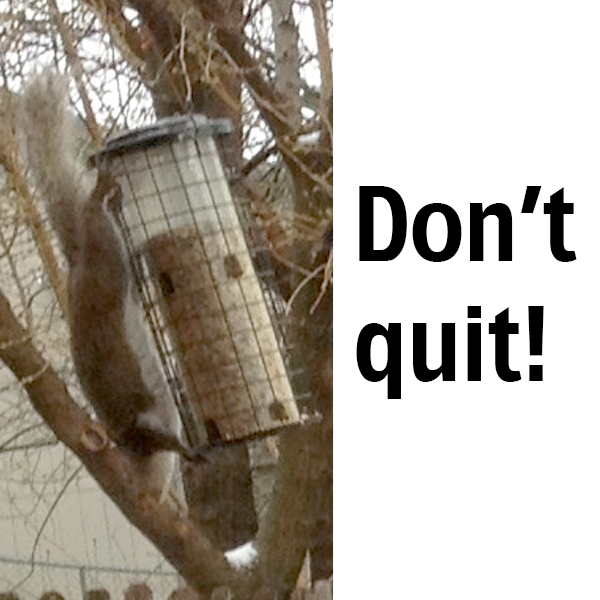
Today is a big day for me.
On Saturday, March 23, I asked my wife, Amy, to pick me up a two liter bottle of Diet Mountain Dew while she was at the store. To have her pick me up my favorite drink was a fairly common request. Not a big deal. However, this time, she screwed up.
She bought me a 20 oz. bottle instead. Not a big deal, really, but it accidentally set in motion a course that I really didn’t think would happen.
The next day, I gave up drinking diet pop completely.
At first, I wasn’t sure that I could make it. In fact, sometimes I’m still not sure. But day by day, I refused my indulgence. I’m not sure how I did it, but somehow, I kept saying, “no.” And now, one month later, I haven’t had a drop of diet soda.
The axiom rings true: success is a process, not an event.
When I started my professional career in the year 2000, I was a heavy Mr. Pibb drinker. Oh man, did I love that stuff. Dr. Pepper would suffice, too, and my waistline showed just how much I loved it.
In time, I would decide that all the extra calories weren’t for me. So, I switched to Diet Dr. Pepper. That was a main staple for a few years until I found Diet Mountain Dew. Then, I was hooked.
I loved how it tasted sweet, like the real thing, and had zero calories. It couldn’t be bad since it had no calories, right?
Well, maybe not.
The first few days off it weren’t bad, but I was definitely tempted by my habit. I’d go to the pop machine almost in a daze, “wake up,” then walk back to my desk. I drank water, unsweetened tea, black coffee, green tea. If it had an artifical sweetener in it, I would resist.
In parallel, I also decided to start back at the gym. I was doing really well with a healthy lifestyle toward the end of last year, but a job change and a new commute brought everything back to chaos. Sadly, I gained the weight back that I had dropped before the job change (which happened in December and certainly didn’t help with all the good food around). While I can’t say that giving up pop led entirely to me getting back on the wagon, I can certainly say that it helped.
After a few days of resistance, I noticed that my cravings for sweet things had diminshed a lot. Now it’s practically zero. Some of that also has to do with my diet, but that’s for another day. But not craving sweet food during the day has really helped. Coupled with a dietary change and regular exercise, I’m down 12 lbs. That’s five more than when I started the new job, but certainly a reversal I’m proud of in only a month’s time.
Yesterday, Amy sent me a picture of a squirrel outside our home, going to great lengths to get to our bird feeder. I had to laugh because it made me think of the last month. I’ve been constantly telling myself, “Don’t quit.” The reward would be worth it. I had to stick it out. I had to keep going.
Indeed, the reward has been worth it. I have more money in my pocket and I don’t feel like I’m a slave to “needing” a soda anymore. I hope it continues. I’m going to work hard to make sure it does.
And although I’m tempted to run out and grab a 20 ouncer to celebrate, I think I’ll go grab a glass of ice water instead.

